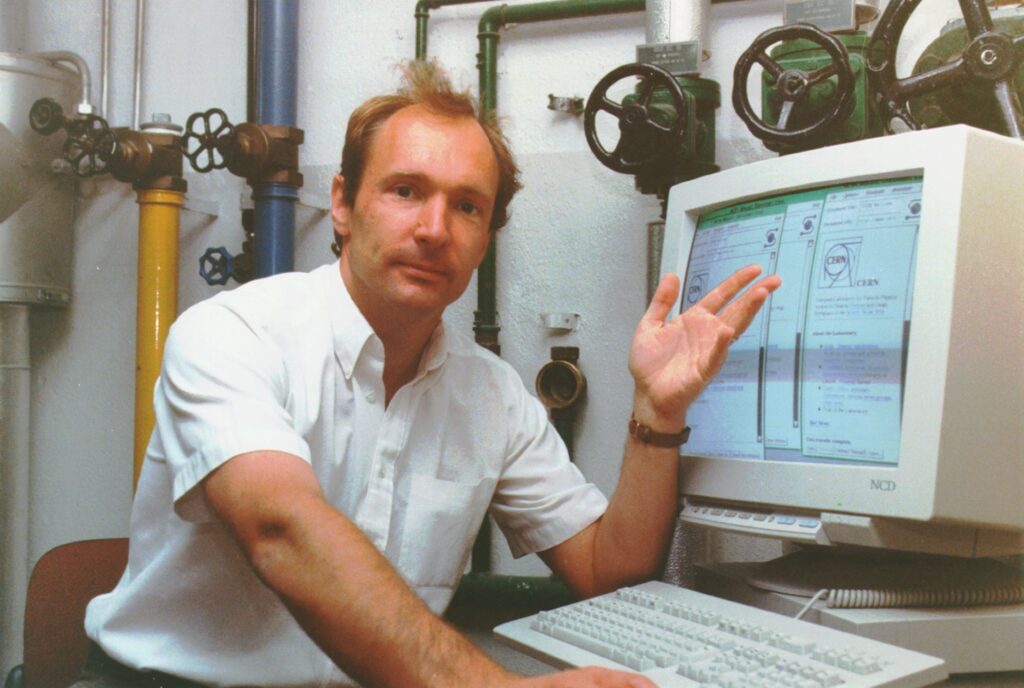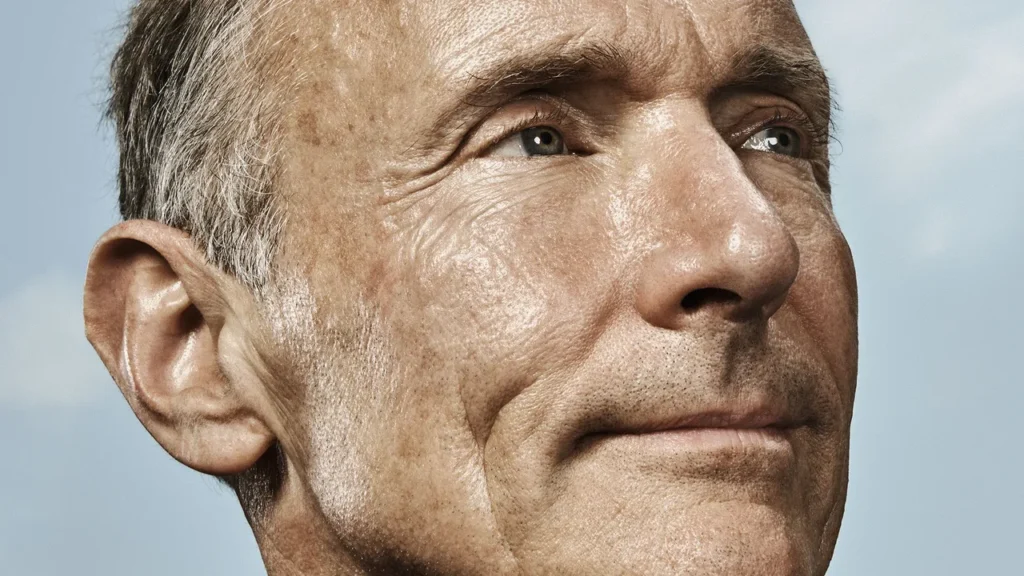It’s a story many take for granted. But the very fabric of our digital lives, the World Wide Web, was born not from a grand. Instantly understood vision, but from deep-seated frustration and a quiet, persistent belief in a better way to share information. In a rare reflection, Sir Tim Berners-Lee, the visionary inventor of the Web, revisits the genesis of his world-changing creation. Highlighting the challenges of innovation and issuing a fresh call for a new paradigm shift.
Nearly 20 years ago, Berners-Lee stood on a stage. Perhaps not unlike the TED stage where he later shared these insights. Driven by a simple yet profound desire: to reform how we access and interact with information. The world in 1989 was a complex digital landscape. Berners-Lee found himself increasingly exasperated by the sheer incompatibility of the diverse computer systems and data formats.
Tim Berners-Lee: From Frustration to a Free Web – The Untold Story Behind the Internet’s Birth
“I was frustrated”, Berners-Lee recalls, painting a vivid picture of a pre-web era.
“I was working in this huge, exciting lab, full of people from all over the world. They brought all sorts of computers with them. They had all sorts of different data formats. All sorts of documentation systems. So, in all that diversity, if I wanted to imagine how to build something with a bit of this and a bit of that, all I could see, I had to connect to some new machine, I had to learn to run some new program, in some new format I would find the information I wanted. But they were all incompatible. It was very frustrating. The frustration of all this wasted potential”.
His initial memo, a quiet suggestion for a global hypertext system, went largely unnoticed. Yet, as Berners-Lee points out, “this is how innovation happens”. Eighteen months later, a nudge from his boss allowed him to pursue this “playful project” on a spare computer. The result? The foundational elements of the Web: HTML, HTTP, and the ubiquitous URLs that now define online navigation.
“I wrote the code and I left it out there”, he explains, underscoring the decentralized ethos from the very beginning. The true hurdle wasn’t just the technology, but convincing people to grasp its potential.
“It was difficult, really very difficult, to explain what the web was. Today it’s hard to explain to people that it was difficult back then. But then, well, when TED started, the web didn’t exist, so things like ‘click’ didn’t have the same meaning”.
He likens the early challenge to making people imagine a link that could point to virtually any document imaginable. A leap that was “so hard for them”.
Despite the initial struggle to articulate the concept, a powerful grassroots movement began to form. What truly excited Berners-Lee wasn’t just the technology, but the burgeoning community and the shared spirit of collaboration.
“It was the most exciting thing of all, not the technology or the things people did with it, but the community and the spirit of all those people together sending emails. That’s how it was back then”.
Tim Berners-Lee’s Vision for a Free, Connected Web
Now, with the digital landscape dramatically reshaped and facing new challenges like data centralization and misuse, Berners-Lee sees a striking parallel to those early days. He’s once again calling for a reformulation, a new revolution. “You know what? It’s funny, but the current moment is almost the same”. He reflects, hinting at his ongoing work and the urgent need to reimagine our digital future.
This historical perspective serves as a potent reminder of the Web’s original promise: a decentralized, democratizing force. As we navigate the complexities of today’s digital world, Berners-Lee’s early journey from frustration to innovation offers invaluable lessons.

Beyond the Click: Tim Berners-Lee’s Vision for a Data-Driven World Where YOU Control the Narrative
The digital age promises connection, but is it truly empowering us, or merely harvesting our lives? Sir Tim Berners-Lee is urging a fundamental shift in how we interact with data. Moving beyond the limitations of current social networks towards a revolutionary concept he calls “Linked Data”.
“It’s not true [that we are just clicking]”. In fact, it’s data about our lives”.
When users share photos on social media or connect with friends, they’re not just interacting. They’re actively contributing data that platforms then “repurpose” to enhance the user experience – for others.
This pervasive data collection, however, often creates frustrating digital walls. Berners-Lee points to the common experience of being unable to share information across different platforms. Citing a The Economist article that sparked widespread discussion about this interoperability challenge.
“The way to break down these silos is to have interoperability between the various social networks”.
But the true excitement, Berners-Lee reveals, lies in the power of Linked Data. This concept exemplified by collaborative platforms like OpenStreetMap. He shares a personal anecdote. By simply zooming into a map on OpenStreetMap, identifying a theater without a name. Switching to edit mode, adding the name “The Terrace”, and saving it, he became an active contributor.
“I did that! I made that map! I just did!”.
Berners-Lee exclaimed, illustrating the profound impact of individual contribution.
“This street map implies that everyone makes their little contribution and creates an incredible resource because everyone does their bit”.
Who is Linked Data?
This is the essence of Linked Data: a collective effort where each person’s contribution. However small, connects to form a larger, richer tapestry of information. Linked Data provides the means to “request it” and connect with it seamlessly.
Berners-Lee paints a compelling picture: data is not just abundant; it’s interconnected.
“When you connect data, you have power in a way that doesn’t happen with the web, with documents. You get this enormous power”.
He calls upon thinkers and doers to embrace this vision, even without immediate return on investment. “They will do it because they are the kind of people who do things that will be good if everybody does them”.
The message is clear: embrace Linked Data.
“I want you to do it. I want you to demand it. And I think it’s an idea that deserves to be spread”.
In a world increasingly defined by data, Berners-Lee’s call for ownership, interoperability, and collective contribution marks a pivotal moment. Challenging us to actively shape a more powerful. Also equitable and connected digital future.
To learn more about this fascinating topic, stay tuned for upcoming articles.

